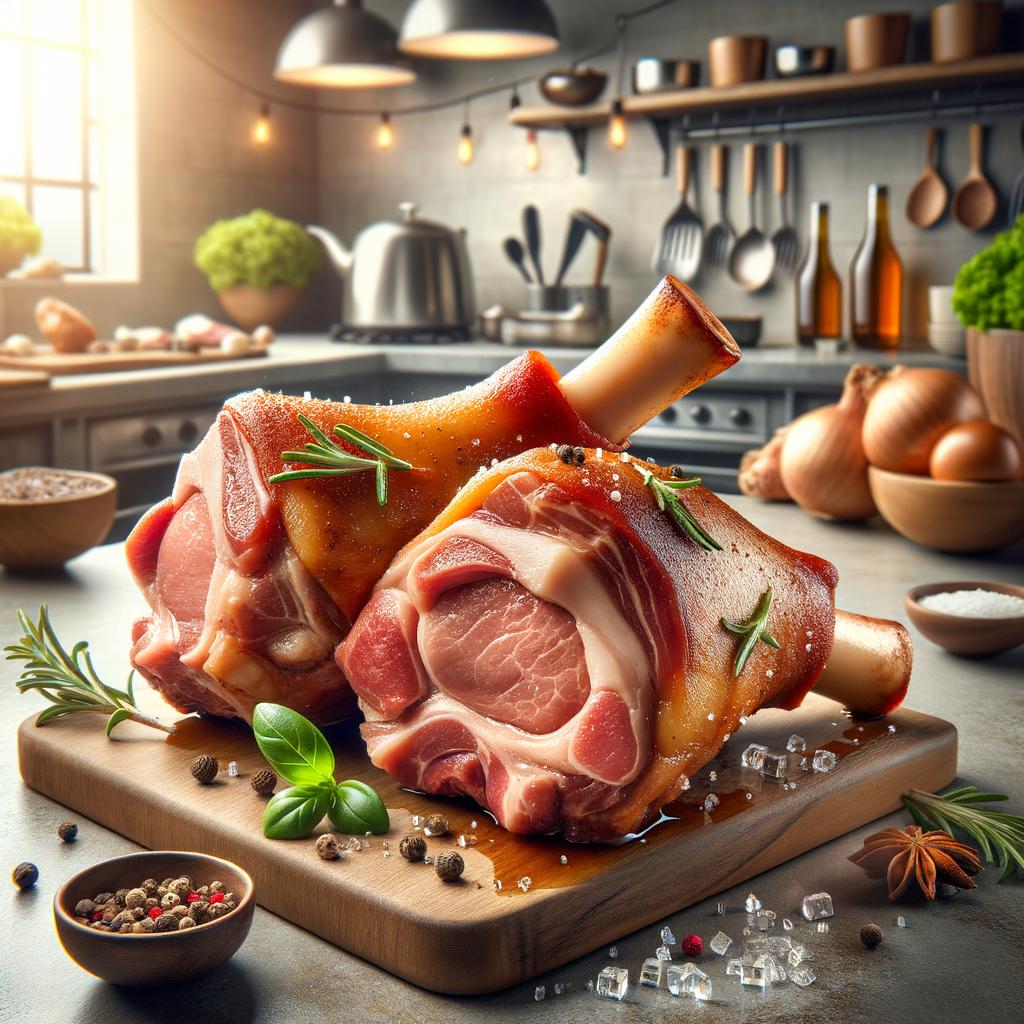Pork Shanks

Description
Pork shanks, the foreleg of the pig, are a culinary treasure waiting to be discovered. They are cylindrical in shape, with the bone running through the center, surrounded by succulent, collagen-rich meat. The exterior is covered with a thin layer of skin, that when cooked properly, can transform into a crispy, flavor-packed delight. The meat itself is dense and robust, full of hearty flavor that can stand up to slow cooking methods. What sets pork shanks apart from other cuts is the bone marrow within, which when cooked, melts into the dish, imparting a depth of flavor that is both rich and satisfying.
Primary Uses
Pork shanks are a versatile ingredient, lending themselves to a variety of cooking methods. They are commonly braised or slow-cooked, allowing the tough meat to become tender and the flavors to fully develop. In Italian cuisine, they are the star of the dish 'Ossobuco', while in German cooking, they are often used in 'Eisbein', a hearty dish of pickled ham hock. Beyond the culinary world, pork shanks have also been used in traditional medicines in cultures around the world, believed to promote strength and vitality.
History
The use of pork shanks dates back centuries, as our ancestors utilized every part of the animal in their cooking. In the Middle Ages, they were a common ingredient in European peasant dishes, providing sustenance and warmth during the harsh winters. Their popularity has waxed and waned over the years, often overshadowed by more fashionable cuts of meat. However, in recent years, they have seen a resurgence as chefs and home cooks alike rediscover the joy of slow-cooked, flavorful pork shanks. There's an old folk saying that goes, "A meal with a pork shank is a meal with heart," highlighting the rich, comforting nature of this ingredient.
Nutritional Information
Pork shanks are a good source of protein, providing essential amino acids necessary for muscle growth and repair. They also contain a variety of minerals such as iron, zinc, and selenium. The bone marrow within is rich in healthy fats, which can contribute to a balanced diet. However, due to the high collagen content, they can be higher in cholesterol compared to leaner cuts. When compared to similar ingredients, such as beef shanks, pork shanks tend to be slightly lower in fat and calories, but offer a comparable nutritional profile. As with all meat products, moderation is key to enjoy the rich taste of pork shanks while maintaining a healthy diet.

